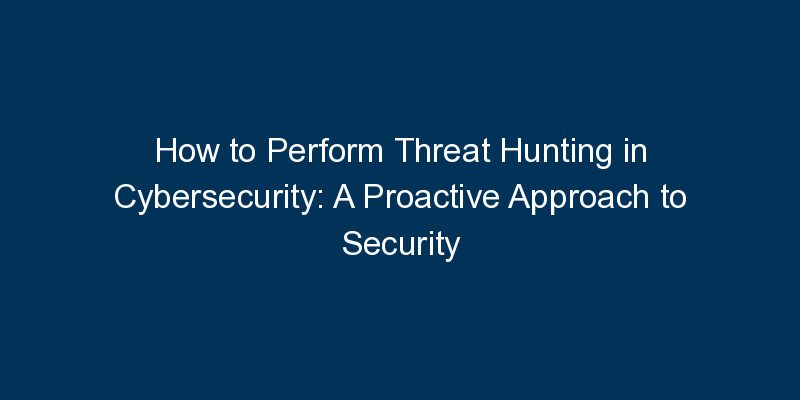In the ever-evolving landscape of cybersecurity, threat hunting has emerged as a proactive strategy to identify and mitigate potential threats before they manifest. This blog serves as a comprehensive guide on how to perform threat hunting, empowering cybersecurity professionals to stay one step ahead of malicious actors.
Introduction:
Traditional cybersecurity approaches often focus on reactive measures, but threat hunting shifts the paradigm by actively searching for signs of compromise within an organization’s network. This guide explores the methodologies and tools involved in effective threat hunting, ensuring a robust defense against cyber threats.
Key Steps to Perform Threat Hunting:
- Define Threat Hunting Objectives: Clearly define the objectives of your threat hunting initiative. Whether it’s identifying hidden threats, validating alerts, or understanding the tactics of potential attackers, a well-defined objective is crucial.
- Data Collection and Analysis: Gather and analyze relevant data from various sources within your network. This includes logs, network traffic, endpoint data, and threat intelligence feeds.
- Creation of Hypotheses: Formulate hypotheses based on the analysis of collected data. These hypotheses guide your investigation by predicting potential threat scenarios or malicious activities.
- Utilization of Threat Intelligence: Leverage threat intelligence to enhance your threat hunting efforts. Stay informed about the latest threats and tactics employed by cybercriminals to inform your hunting strategies.
- Continuous Monitoring: Implement continuous monitoring mechanisms to detect anomalies and deviations from normal network behavior. Automated tools can assist in real-time detection and alerting.
- Collaboration and Knowledge Sharing: Foster collaboration among cybersecurity teams and share knowledge gained through threat hunting. This collective intelligence strengthens the overall security posture of the organization.
Conclusion:
Threat hunting is an essential component of modern cybersecurity strategies, allowing organizations to proactively identify and neutralize potential threats. By following the steps outlined in this guide, cybersecurity professionals can enhance their threat hunting capabilities and build a resilient defense against cyber adversaries.






















Comments